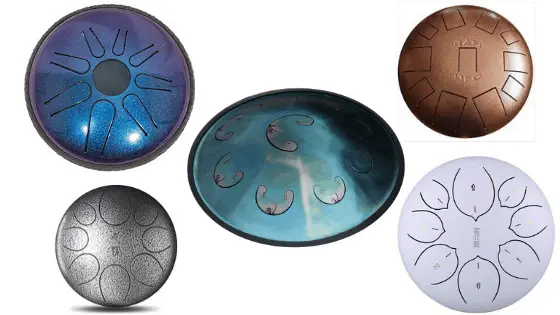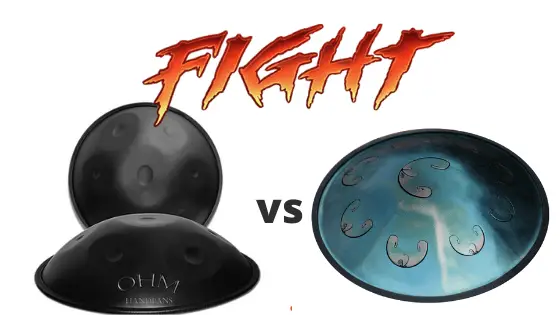Steel Tongue Drum Guide | (History, Scales, Price, Makers)
The title of this article is Tongue Drums, so you may be searching for either wooden or steel tongue drum information. Two out of every three people searching the internet are looking for Steel Tongue drum info, so whilst I will cover both, this article is for Steel Tongue Drums, click here for Wooden Tongue Drums
What is a Steel Tongue Drum? – A steel tongue drum is a percussion instrument invented by Dennis Havlena in 2007. Created from a propane gas tank, the original steel tongue drum was called ‘Hank drum’ which was inspired by the original Hang handpan and the gas tank from which it was created.
This guide will run through the types of tongue drums, how the Steel tongue drum came to be and is also known as a tank drum. I will also explain Guda Drums, the Rav Vast, what to look for and what to avoid. Or check out my recommended Tongue Drums for my favorites
Where did the Tongue Drum originate?
A form of tongue drum has been around for a very long time if considering the wooden versions created by the Aztecs known s log drum or tone drums. Another similar instrument is the slit drum of African origin, these were the early predecessors to the modern-day steel tongue drums.
Dennis Havlena invented what we now know as the Steel Tongue drum, following inspiration from other creators and the Hang™
Who is Dennis Havlena?
Dennis Havlena has been making musical instruments from scratch and creating new instruments from old ones for over 50 years. He has been documenting his ideas, trials, tests and finished products on his website for the last 25. It really is worth a look to see his passion, innovativeness, and plans, which he freely shares.
Below is a video of his first [completed] Tank Drum. You can see how raw the invention was, with attached bungee cords to dampen and shorten the sustain. It is quite magical.
Where did he get the idea?
Dennis cites the original Hang™ as the inspiration for his ‘Hank Drum’ – In fact he didn’t even come up with the name, that was suggested by a member on the hang Forum, Dennis liked it very much and adopted it.
The ‘Hank Drum”, intended or not, was really was an adaptation of an instrument named the ‘Whale Drum’, invented by Jim Doble. Another instrument inventor who took old propane gas tanks and fashioned them into various instruments.
Another inventor of an instrument using a gas tank, this time helium was Felle Vega who used the tank, producing slits in the side and creating the ‘Tambiro’. Not to be confused with a Timbero Bell.
The picture below is part of Dennis Havlenas guide to building a Tambiro, when he had a go. He considered his to play and sound as good as those he had heard on YouTube.
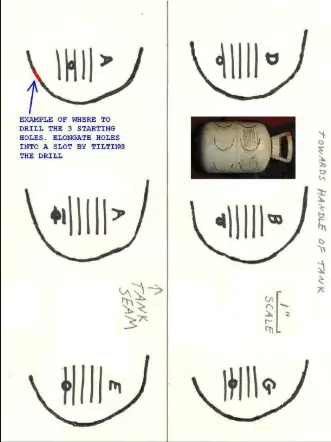
When was the Steel Tongue Drum Invented?
Dennis created and finished his first tuned steel tongue drum in 2007, naming it the ‘Hank Drum’ – He is fiercely opposed to production, in terms of commercially producing them himself. He is happy that he invented it and that manufacturers are creating beautiful looking instruments based upon his design for commercial purposes now. He continues to invent and create brand new instruments.
My Favourite Stuff
These are a few of my favorite things including items covered by the subject of this page. All items are personally owned by me, [I have bought them all] and come with the recommendation based on my personal use not just a quick sale affiliate pitch.
Kosmosky Tank Drum

Kosmosky is my favorite tank drum which you can buy direct from the shop.
Priced between $269 to $490 be assured you are buying one of the best Tank drums available in the World saving at least $200 on the Rav Vast
Cheap Tongue Drum Course for Beginners
My good friend Alex has produced this superb video course on how to play Tongue Drum.
Using a Kosmosky tank drum to take you through the basics, there is a follow-up course too when you become more advanced.
The Rav Vast Range
The Rav Vast Tongue Pans are unique in size and sound and start at around $700.
An excellent introductory alternative for people not quite prepared to spend $2000 on a handpan.
Or an upgrade from Tongue drums like Kosmosky
Moozika Kalimba
Kalimbas are awesome and I own about 8 right now, but if you have come across my website looking for Kalimba information, then I will recommend this cheap and easy to buy Kalimba available on Amazon as something to get started on.
In fact it will last you as long as you are learning the instrument.
At around forty bucks, it’s not a bank breaker either.
Why do they call it a Tongue Drum?
In fact, it has been only very recently that the term Tongue drum has become more popular than ‘Tank Drum’ when referring to this instrument.
The steel tongue drum gets its name from the slits cut into the steel to produce the notes. They are very much tongue-like in shape.
Each tongue is unique in length, width, and depth in order to create different notes when struck by a finger or mallet when played.
The name tongue drum has been a recent adaptation from previous tank drums, slit drums, log drums, and whale drum creations. In fairness, it does represent the look of the instrument well and would seem to be here to stay.
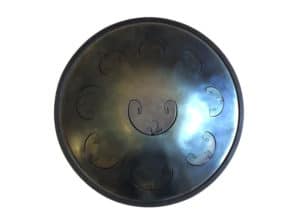
Some manufacturers are creating tongue drums but very much branding their instruments, such as the Rav vast and Guda. Both Tongue drums, but rarely referred to as such.
The tongue drum has become so popular just recently that it has overtaken ‘handpan’ as a search term on google.
What does a tongue drum do?
A Steel Tongue drum is an instrument although not actually a drum by definition. It is an instrument within the percussion family, however, and produces notes played on the slits created in the top section of the steel case.
Tuned to a diatonic scale they are very easy to make music with, even for absolute beginners with no musical knowledge. mainly tuned to a diatonic scale, this means that each note will sound good with the one played prior or after.
The notes are arranged in the same way as you would find on a handpan with each note either going up or down the scale (depending on which way you have it placed) from left to right across the head of the instrument.
This is quite different than you would find on other definite pitch percussion instruments like the Xylophone, Marimba or indeed the piano where the pitch rises and falls on the keys from left to right in succession.
For more details on ‘definite pitch’ percussion, refer to this guide I wrote on the various types of pitched percussion instruments.
Notes on a Tongue Drum
Most tongue drums are created with 8/9 notes – As discussed the notes are created by the tongue-shaped slits cut into the upper section of the steep pan. Steel tongue drums can come in various scales, the choice of which is down to your personal preference.
There are smaller versions of the tongue drum, these have fewer notes as a result of being smaller. The smaller instruments are difficult o play with the fingers too, due to the accuracy required and slightly harder strike needed to get the sound. For that reason, they are best played with mallets.
What Scales are Available on Tongue Drums?
The list is not endless but it’s pretty long with some scales very close to others. There are of course a limited number of scales, but with different styles of tongue drum and sound, it lengthens.
As an example, just one of the tongue drums on my recommended gear page is available in 33 different scale configurations. And that’s just the 9 note version.
Start adding a tenth or eleventh note and the list lengthens further.
How to Choose a Tongue Drum Scale
The best advice here is to go listen to as many tongue drum scales as you can and chose one based on what you like the best. It really is as simple as that.
Be prepared – it will not be a short decision-making process. There are multiple scales, some very subtly different from others, so deciding may not be as easy and quick as you might expect.
It will depend very much on what you like and I know what you are thinking now. ‘I don’t know what I like!!’ – Let me help
As an example, major scales are usually uplifting and happy, whereas Minor scales can be darker, sad, or thoughtful perhaps. That is a good starting point.
If you want to create happy or cheerful music then listen to a C Major Scale.
If you are more into melancholy, then a C Sharp [C#] scale may be the way to go. The example in the video below is a more upbeat tune but you can feel the thoughtfulness in the scale.
Perhaps some mysticism with an F integral Scale. The video below demonstrates the more mysterious sound with this scale. You may spot this tongue drum has 11 notes.
Taking a trip to YouTube and searching for Tongue Drum Scales, will help. To save you the trouble, this is a playlist with no fewer than 66 videos with lots of different scales
What is the Difference Between a Handpan and a Tongue Drum?
It may be easier and quicker to list the similarities before getting onto the differences. They are similar in that they are both constructed fro steel and circular in shape. They are bot tunes to diatonic scales for the most part and there the major similarities end.
The differences between handpans and tongue drums are rather more important beginning with production and then price and availability
Construction
Both are made from steel, this is true, abut the handpan is generally a larger instrument and therefore heavier also. The construction is very different.
Notes
The tone fields on a handpan are very different from those on a tongue drum. Where the tongue drum has cuts and slits in the steel, the handpan is not pierced in any way. Rather, on a handpan, the tone fields are created by hammering the notes into shape, creating stress within the steel which in turn creates the pitch.
Production Time
A handcrafted handpan, (there is no other way of creating a quality handpan), the process of sinking the steel shells, nitriding the steel, and tuning can take weeks to complete – In contrast a tongue drum can be created in a fraction of that time.
The fast production time of a tongue drum is the reason they are more widely available than a handpan, and also that is reflected in the price
Price
The very best tongue drum will cost no more than $1,500, but there are very many tank drums available at far cheaper than that. $300-500 will secure you a great tongue drum.
In contrast, a good quality handpan from new is going to start at $1,000 and rise to $4,000 and above. This is entirely due to handpans (good quality handpans that is) being available ‘off-the-shelf and often only to order from limited manufacturers.
Tongue Drum Brands
There is a good deal of tongue drum manufacturers in the market, but here I cover three that produce excellent instruments. These creators all produce very good quality tongue drums and I can personally vouch for each
Rav Vast
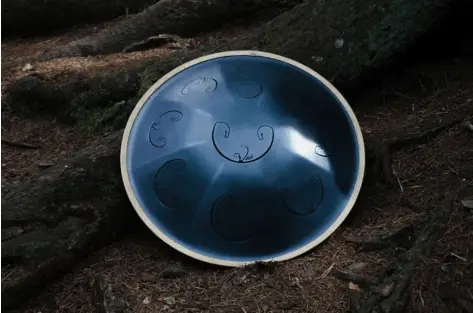
This is the tongue drum that looks more like a handpan than the others below. First created in 2013 by Andrey Remyannikov, an engineer in Russia. It has a very unique look and is instantly recognizable as a Rav vast drum.
So much so that it is mostly referred to as a RAV VAST than a tongue drum. Available in 16 scales it is widely regarded as the primary tongue drum on the market.
My personal favorite scale of the Rav Vast is the B Rus as can be seen below being played by Davide Swarup
Learn How to play the Rav vast [almost as well as David with this Essential Rav Vast Beginners Guide, using the promo code COOLPERCUSSION
GUDA

Now, if you are looking for a great looking tongue drum, look no further than the GUDA range. Beautifully adorned with decoration the GUDA is a superior tongue drum available in a huge range of styles scales and decor.
The GUDA also has options of different scales on either side of the instrument delivering a two in one option.
I’m not going to claim they sound better than the Rav Vast but they are cheaper and are also available in different sizes too. As you will see on my recommended Tongue Drum page, I prefer the Freezbee range.
I think you will agree from the photo above they look fantastic too!.
HAPI

Like Rav vast HAPI produces both handpans and tongue drums, but it is the latter instrument that is preferred from them.
You will note with the HAPI the tongues are more rectangular in shape as opposed to the unique RAV shape and GUDA more tongue-like ‘tongues’
In particular, I like the smaller more portable tongue drums from HAPI. Pretty tricky to play with the fingers, mallets are required to play effectively. Whilst they take a little getting used to, it will take no time at all to become proficient and play some great tunes
How much does a Steel Tongue Drum Cost?
A tongue drum can cost as little as $100 for a small entry-level instrument rising towards $1,000 for a top of the range Rav Vast Drum. There is a wide range of size, scale, and quality options, mostly available to order and delivered in days.
At the time of writing [2019], the demand for Tongue drums is increasing exponentially. Mostly through awareness. As already mentioned above, tongue drums as a search term, surpassed handpans in October 2019.
My guess is this is driven more through the awareness and popularity of handpans more than tongue drums themselves. But if you, like me, discovered the tongue drum through looking at and researching handpans, the chances are you have already discovered they are more widely available, delivered sooner and not to mention a whole hep cheaper!.
Quick Tip – Please stay away from Aliexpress tongue drums – At this stage you are more likely to be disappointed than thrilled with what you recieve. It won’t be long before better quality instruments arrive but for now, they lack a little something in the quality arena.
Tongue Drum Prices (2020)
Prices are approximate and as a guide, please refer to manufacturer stores for exact pricing
| Tongue Drum | Price |
| Rav Vast | $700-$900 |
| Guda Double | $750 |
| Guda Freezbee | $300 |
| Hapi 15″ UFO | $420 |
| HAPI 10″ | $230 |
| Hapi 8″ Mini | $150 |
| Idiopan Dominus | $400 |
| Idiopan 12″ Domina | $300 |
| Idiopan 6-inch Bella | $140 |
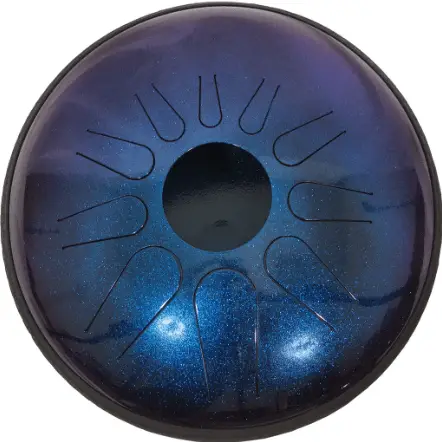
Where to buy Steel Tongue Drum
There are a host of places to buy Steel tongue drums. They are available direct to order from the manufacturer’s websites, Amazon lists a good range of tongue drums.
Another alternative for buying a tongue drum is taking a look at my recommended gear page for Tongue Drums.
If you have found this guide helpful in any way, please take a look at the options for Rav vast, GUDA, and HAPI on my recommended tongue drum page.
I have owned and played each of these instruments. If you use the links, you’ll pay no more than if buying direct, I’m not a retailer, but I get a small percentage commission for the referral. It helps me continue to build and update this website and the associated guides. Thanks in advance
How to Play Steel Tongue Drum
So just before you make the commitment to buy, you may want to know how to play a tongue drum. I am sure you have already checked out videos or watched those above in this guide, so you are already aware that they are played with both the hands, fingers or mallets.
The Best Tongue Drum Course for Beginners & Intermediate Players
If you have just purchased a tongue drum or tank drum and can’t wait to get started with playing, a good friend of mine, Alex Connett has a superb tank drum for beginners video course available at a super cheap price of $35.
How to play with hands
My 100% preference is to play the tongue drum with my hands. It’s a personal choice but one that led me to buy the bigger instruments as I really connect and feel the way I play. Something that I didn’t feel I would have with mallets. Indeed this was the case and my smaller tongue drum was out of the door almost as quickly as it arrived!
I will say that having come to Tongue drum after playing handpan may have affected my feeling in this regard, however, for me, there is much more control and many more things you can achieve with your hands, fingers, palms, and heels of your hands than you can with a couple of sticks. Others may not agree.
Being able to feel your way around the notes, have total control of the touch and play harmonics and affect the tone with a carefully placed finger on a tongue can really expand what is achievable with your instrument.
How to play with mallets
For balance in this section, I have to mention playing with mallets. If you’ve read the section above you’ll know I do not favor it, but there are some very skilled tongue drum players with mallets who can produce some wonderful music with them.
Indeed, the mallet does produce a different tone when playing and thus adds another dimension to playing the tongue drum. Not to mention the possibility of experimenting with different types of mallet heads to expand the range of sound further.
The important thing to note, however, whether playing with mallets, fingers or hands, is to keep strikes fairly moderate in strength. Start bashing about like Cozy Powell, Dave Grohl or John Bonham and you’ll need a retune or a new instrument before you know it.
Tongue Drum Pick Ups and Amplification
You may want to make performances with your tongue drum. If so, you might want to use pickups and amplify the sound.
I will cover this all off in a separate post, as to go into depth here would be to move away from the basic topic of the instrument itself.
Please take a look at my Handpan and Tongue drum Amplification Guide.
How to Tune a Tongue Drum
We will take the Idiopan Tongue drum range as an example here as they are produced and sold as tuneable. This may be a little misleading as the purpose of tuning these is more to re-tune to how it should be rather than re-tune to a different scale, but in any case, let me explain.
The tuning on the idiopan is not solely but largely controlled by super strong magnets; the position of which affects the pitch of each tongue.
The closer to the center the magnet is, the further away from the solid body of the drum and therefore the lower the note – By the same token and conversely, the closer to the body, the higher the note will become.
These magnets are an integral part of the tuning and as such should be provided the utmost care. A slight chip, crack or break and the magnet will no longer function correctly in tuning the tongue and a replacement will be required. The magnets are of the super-strong variety, to ensure they remain in place as much as possible and therefore react heavily with magnetic surfaces, and in particular, other magnets. In close proximity to other tongue drum magnets, they will have a tendency to ‘snap’ together, which is when damage most often occurs.
Idiopans come with a tuning guide with some tuning variations and instruction how to retune your tongue drum
They do not come with a tuner, however, so this is a separate purchase you would have to make. Chromatic Electronic Tuners are not expensive, however, and there are many available. Having gone through a good number of tuners over the years, I use a couple of tuners.
You do not have to spend a great deal of money on buying a tuner for your tongue drum, even if you want to retune to a different frequency, like 432 for instance. This all-purpose instrument tuner from Amazon is very reasonably priced, half the price of others and available from Amazon.
Jim Doble – Whale Drum
Jim Doble is an instrument inventor and creator responsible for the tongue drum predecessor, the ‘Whale Drum’ – Taking a propane gas tank and cutting slits into the side he produced one of the first ‘tongue drums’, using his conceptual techniques and ideas.
With no musical background at all, Jim took to creating his own instruments after attending a music workshop in 1988 and going on to create a type of instrument based on the xylophone that he could play standing.
Quite where the journey from wooden xylophone-type instruments to reconstructing propane gas tanks for drum-type instruments took him is anyone’s guess, but we certainly have to appraise some thanks for his vision and creativity in the evolution of the tank drum.
Felle Vega – Timbero
Felle Vega has a rather higher profile than that of Jim Doble or Dennis Havlena. He is a percussionist of some renown hailing from the Dominican Republic – By his own definition he is an ‘Imaginary Folklorist’ Whatever one of those is!
I am an Imaginary Folklorist
Felle Vega
A traveling artiste worldwide he also crafts hos won instruments and in particular in relation to tongue drums, his Tambiro. A helium gas tank, fashioned with tongues to produce notes as a precursor to the tongue drums today.
Below is a short video of Felle playing his instrument.




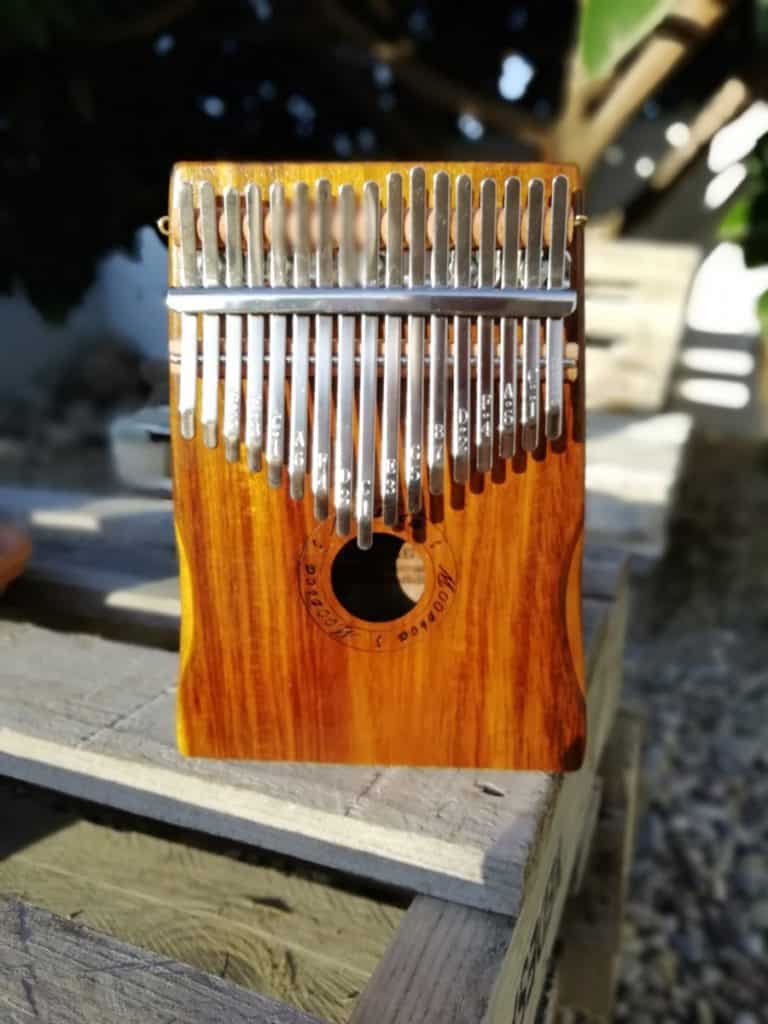
![Hang Drum for Sale | Handpan & Tongue Drum Buying Guide [New]](https://cdn-0.coolpercussion.com/wp-content/uploads/2019/11/Hang-drum-for-Sale-768x384.png)
